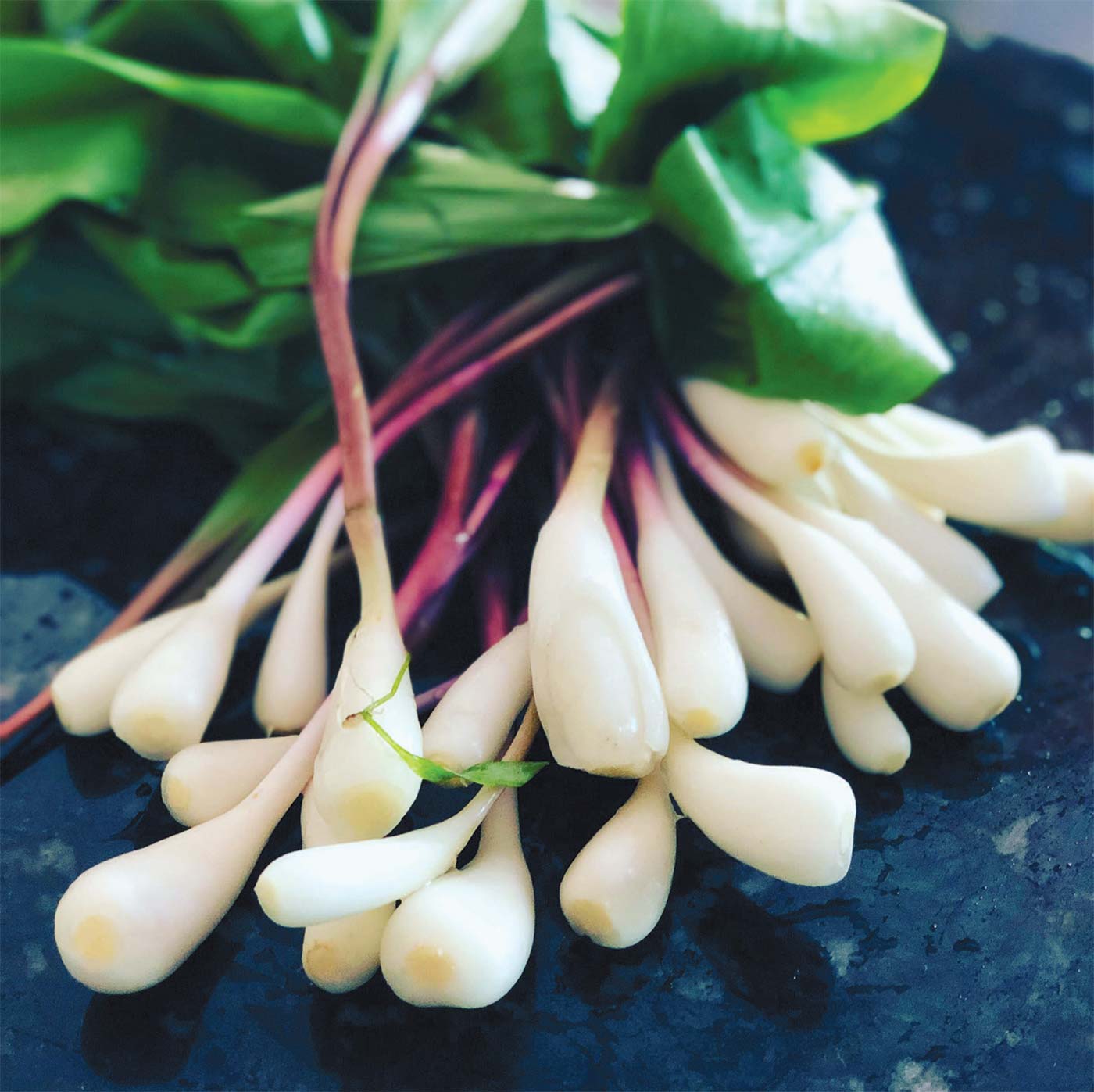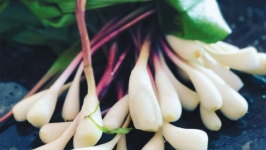Ramps Present a Rewarding Walk in the Woods
A walk in the woods is one of the great pleasures of early spring. Sunlight filtering through the trees highlights the subtle greens of new life. The sweet lilt of songbirds fills the fresh spring air. With the first step, one is invited to inhale the smell of good earth rising from beneath the leaves of last autumn, still blanketing the forest floor. They have nourished the soil beneath them, enriching the flora and providing food and shelter for the fauna. It is a once-a-year opportunity to witness the rebirth of the forest and all it has to offer.
This feast for the senses may cause one to overlook the fragrant, elongated six to eight-inch green leaves on a dark pink stem, that signal the delicacy beneath: delicious ramps. They are one of the first vegetables of spring offered up by Mother Nature for our eating pleasure. They should not be ignored.
Ramps are perennial bulbs that sprout aromatic leaves with a tantalizing flavor. They present in clumps and are at their peak in the woods in April and early May. Members of the onion family (Allium Tricoccum), ramps are kin to leeks, garlic, chives and shallots. Patches of them grow in the rich, moist soil of deciduous forests of the Eastern United States.
Growing them commercially is a lengthy process. It takes five to seven years for planted seeds to grow into mature plants, a full three to five years if tiny bulbs are planted. The harvest time is short, and if you are unaware of their virtues, they are easy to miss. Fortunately, they grow wild and are abundant in the forests of Wisconsin. In summer, when the window to harvest them has passed, the plants are adorned with delicate ivory blossoms that bloom and eventually seed, keeping the cycle going.
Consider this a new ingredient with a distinctive texture, taste and flavor to add to your cooking toolbox. If you are looking for a little pizzazz, consider cooking with these tasty gifts from the forest. Ramps can be grilled with salt, pepper and olive oil, sautéed to perfection as a prelude to any dish and are a tasty addition to your favorite quiche. They can be made into a pesto, cut up and tossed into soups, rice dishes and risotto. I have seen recipes for ramps that are pickled, to extend the pleasure long after the season is over. They can also be blanched in boiling water for 15 seconds and then placed in an ice bath and frozen. I prefer them fresh from the woods. My favorite recipe involves grilling the ramps to perfection and serving them with a honey, lemon, ginger, sherry and mustard sauce.
Don’t just look for ramps in the woods, look for them on menus in fine restaurants. They are sold for upwards of $20 a pound and are considered a delicacy by chefs everywhere.
A great resource for simple ramp recipes can be found in “Eat Like There’s No Tomorrow,” by Chef Hans Rueffert. He describes the leafy green part of the ramp as “garlic-kissed spinach.” I have to agree with him. It is my favorite part. His cookbook is part chef musings and part history with a great deal of perspective. Look for his recipes to extend your enjoyment of ramps by making ramp butter or ramp soup.
Don’t miss the opportunity to partake of this prolific local fare from the forest, courtesy of Mother Nature. Take time to smell the ramps and enjoy the hunt.






